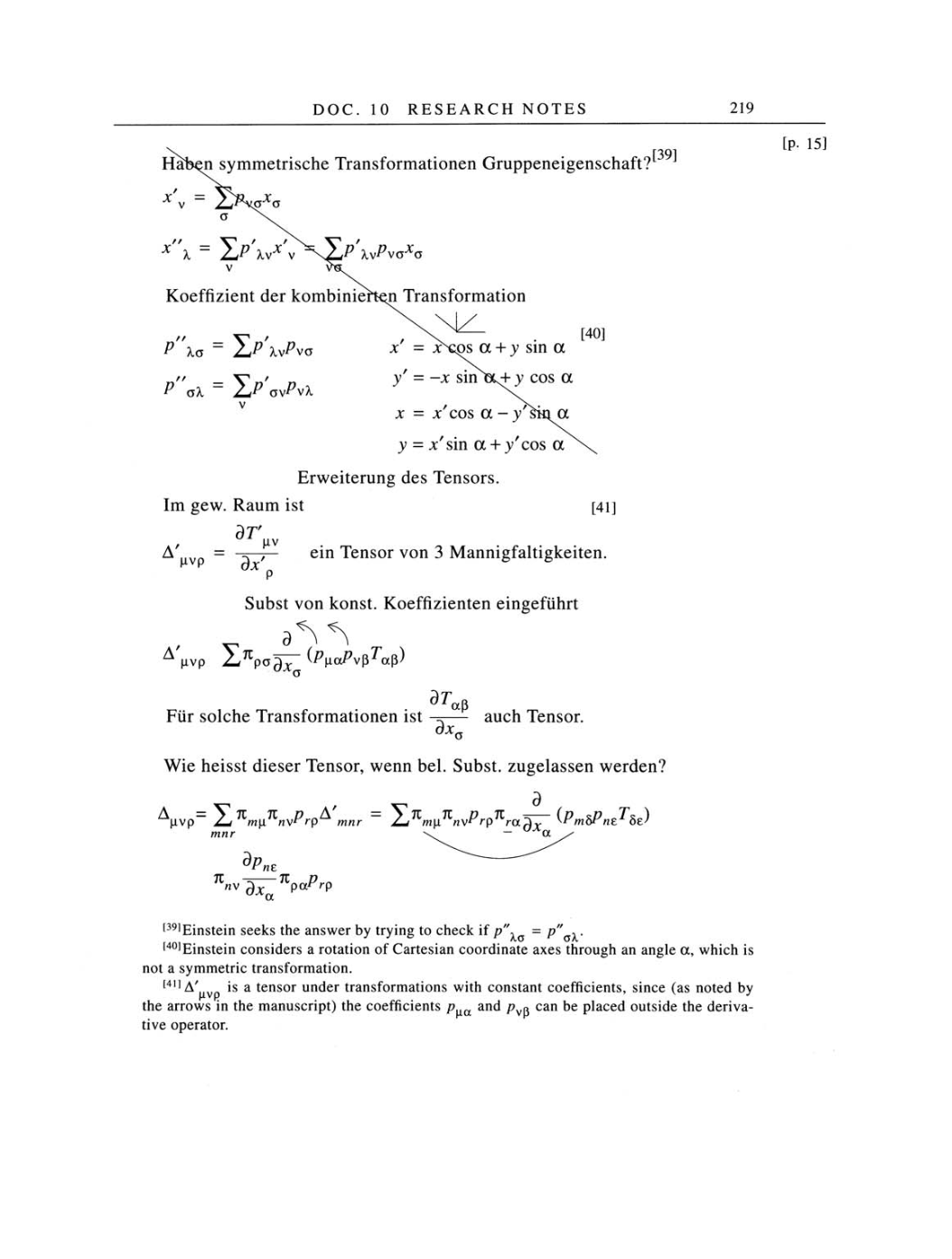DOC. 10
RESEARCH
NOTES 219
Haben
symmetrische
Transformationen
Gruppeneigenschaft?[39]
[p. 15]
=
GXG
G
rr
T1
/ /
x
x
=
2.Pivx
P
X\P\3X3
Koeffizient der kombinierten Transformation
P'\c
=
ÜP'xvPvo
P"aX =
^P'avPvX
x
=
xxos a
+
y
sin
a
[40]
y'
=
-x
sina^
y cos a
x
=
x cos
a
-
y
a
y
=
x
sin
a
+
y
cos a
Erweiterung
des
Tensors.
Im
gew.
Raum ist
[41]
ar
A'
|IV
ein Tensor
von
3
Mannigfaltigkeiten.
dTuv
dx'
Subst
von
konst. Koeffizienten
eingeführt
"
a
,
^
|ivp G^xG
^^otPvß-^aß)
Für solche Transformationen ist
dTaß/dxa
auch
Tensor.
Wie
heisst dieser
Tensor,
wenn
bel. Subst.
zugelassen
werden?
Afivp~~
^myPnvPrp^
mnr
~
^/^m^nvPrP^ra^x
^PmbPm^be)
mnr
-
dpnz
7l"v
dx KPa^rP
UAa
[39]Einstein seeks the
answer
by trying to
check if
p"Q
=
p"a^.
[40]Einstein
considers
a
rotation of Cartesian coordinate
axes
through
an
angle a,
which
is
not
a
symmetric
transformation.
[41]A'uvp
is
a
tensor
under transformations with
constant
coefficients,
since
(as
noted
by
the
arrows
in
the
manuscript)
the coefficients
pua
and
pvß
can
be
placed
outside the deriva-
tive
operator.
